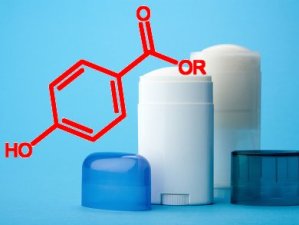creatine while cutting
What is Creatine?
Creatine is essential for energy balance and exercise. Every movement requires energy in the form of ATP. When all sources of ATP are depleted, muscles can no longer contract and the body stops working. Creatine is needed to restore ATP, so the more creatine you have in your muscle cells, the longer you can train.
Creatine is an economical additive used to increase muscle mass and strength and have the following functions.
An additional energy source
for reducing muscles can increase the size of muscle cells due to moisture increase. Legacy. The fact that the “combustion” sensation at the muscles
accelerates the synthesis of protein
creatine is that it is leading to the fact that arginine, methionine and glycine can be synthesized from the expenses of three amino acids. 90% of the body’s creatine is concentrated on the muscle to have an average of 3.54 grams of creatine for each kilogram of weight.
Creatine is present in the food product of animal origin, but unfortunately, most of them are destroyed, so athlete and bodybuilder take special creatine formulations in the form of additives.
Do I have to take a creatine day luggage or a different form of creatine?
Creatine is traditionally sold as a creatine luggage as a powder form. Several different forms have appeared over the years. Creatine ester-based products with beautiful names like Krealkalin and more can be found at high prices from leading manufacturers. On the product page you can find many interesting facts about how unique, harmless and effective these drugs are.
In fact, everything is very simple! To date, there is only one form of creatine that has been clinically proven to be effective with creatine monohydrate. So, if you don’t want to waste your money, go for the simplest option, creatine monohydrate.
What is theCreatine Transport System?

Creatine needs a little help to get to your muscle cells. The transport system is essentially a product that helps creatine reach muscle cells. There are special products for the active transport of creatine.
Other amino acids
Arginine
Taurine
BCAA
Taurine
BCAA or Alpaliphion Carine
Carbohydrate
Squirrel
Squirrel is also included in many createWort additives. Example:
NOXPLODE 2.0 (BSN)
Monster Pump NOS. (Cytosport)
Impact Therapy (Universal)
If you do not want to hear the prior point, you can use a very simple way to carry creatine to muscle cells. Take a regular creatine mono luggage powder and add it to your favorite protein or cocktail.
Sweet Fruit Juice You can mix creatine luggage in a cup. Protein and carbohydrates (sugar, glucose) stimulate insulin production, which promotes the temple of creatine into muscle cells!
Some sports nutritional producers have already added creatine luggage to the product! There are several examples of weighted certificates with high-quality high-quality high-quality high-definitions for more efficient biode emission loads.
Super Mass Gain Fast 3100 (Universal Food)
Optimal Power Serious Mass (Optimal Power)
When is the way to get creatine? Do I need a download step? When taking
Creatine Monohydrate, it is widely believed that the loading phase must be completed for maximum effect. For example, the first 5-10 days should be taken with 20-25g of creatine monohydrate, then 10g should be taken 3-4 times a week after training or between meals. Do not forget that not all digestive tracts respond favorably to these doses of creatine.
This second option is better tolerated in the digestive tract. Take 10 g of creatine monohydrate per day for 10-14 days, then 5-10 g 34 times a week on training days. It is best to take creatine after training
muscle cells are more receptive to nutrient absorption. You can also take creatine between meals (with juice or protein shake).
Can I take creatine while on a diet?
The question of creatine intake during a diet comes up quite often, and the answer to that question is ambiguous. In general, taking creatine significantly increases weight. The diet is aimed at losing weight, not increasing muscle mass and strength, so creatine is least needed in this case.
Should I Cycle Creatine?
Although not absolutely necessary, it is not bad to give the body a rest. After taking creatine for 2 months, it is recommended to take a 1 month break.
Side Effects of Creatine
Gastrointestinal discomfort is the main unpleasant side effect of creatine. If you take large amounts of creatine monohydrate with a small amount of water, you may experience some discomfort and nausea.
Dehydration. Creatine loves water! Drink plenty to prevent dehydration. You should drink up to 3 liters of water (1015 glasses) per day. Increased cell hydration creates ideal conditions for efficient protein synthesis and rapid muscle growth!
The Best Creatine Supplement
When you look at a product in a health food store or online supplement store, you can’t help but see a variety of creatine products.
There’s one simple reason why creatine works almost everywhere today. Yes, creatine is a supplement that makes you bigger and stronger. Creatine helps you train harder by helping your body produce more ATP energy. Everyone knows what happens when you train harder, right? The mass of skeletal muscles increases.
What Types You Should Take
Now that you know that creatine works, it’s time to think about adding creatine to your supplement package. You don’t want to buy the cheapest creatine powder and start swallowing it. To get the most out of your creatine supplement, you need to use the right approach. As with all supplements, you need to follow a planned and meticulous approach to get the best results. Choose
quality.
Your first step is to choose the creatine product that works best for you. We recommend using the highest quality creatine you can afford. You can get good results from any type of creatine, but the purer the product you take, the better the results. Some creatine powders contain carbohydrates that help transport creatine monohydrate into the bloodstream. You can purchase one of these types of supplements or order plain creatine powder and take it with grape juice to achieve the same effect. Buy good creatine from a reputable manufacturer so you don’t waste your money on poor quality products.
Creatine Loading
Creatine loading should be taken during the initial creatine loading phase.
This phase should last for a week and you should consume 20-50 grams of creatine per day. You don’t have to constantly use that much monohydrate or phosphate, but it will help saturate your blood with enough creatine at the start of your cycle.
Maintenance Dose After completing the
creatine loading phase, reduce your creatine intake to 5-20 g daily for 4-6 weeks. You should start to feel an increase in strength and size in the second or third week, so if you want to keep these gains going, keep the dosage over the next few weeks. After 6 weeks, stop taking creatine for 1-2 weeks and start the loading phase again.
Grow Faster
Follow the recommendations listed above and you will start to notice an increase in muscle mass and strength. The second cycle may not be as dramatic as the first cycle, but you will still see a continuous increase in lean muscle mass. When you reach the point where you are no longer seeing results, stop taking creatine for a month and then start loading again. If you stick to this plan, you’ll see how well creatine works for building muscle mass.
Creatine Benefits and Side Effects
If your diet and exercise program are already well-established, but you want a little boost to get results faster, then creatine supplements may be what you’re looking for. The benefits of
creatine are well known in the bodybuilding world, and bodybuilding supplements are now a staple of many average fitness fans trying to give their training programs an extra kick in their pants. ..



What can creatine do for me?
If you already have a healthy and balanced diet and an exercise program tailored to get the results you want, you may think you don’t need supplements. But the benefits of creatine are actually more obvious to those who cover all other bases.
Bodybuilding supplements don’t magically change your physique unless you work hard too. Creatine is a substance that naturally exists in the human body. Here’s a quick and brief overview of the benefits of the creatine training program: The human body absorbs creatine and produces extra energy that allows the muscles to burn out during exercise. Just right?
So what does it do with you? This simplification of the very complex mechanism of our body means several different things for creatine users:
Increased energy levels.
Ability to achieve and maintain more intense training
More frequent training
Increased muscle mass and strength
What should I know about creatine?
Like many others ingested, with careful use, some minor creatine side effects can occur. Some of these may include bloating, abdominal pain, nausea, diarrhea, muscle cramps, increased urination (usually reported by women during menstruation), and weight gain.
There are several things you can do to minimize the side effects of creatine.
Drink plenty of water: This helps prevent dehydration and weight gain due to water retention. Pay close attention to the recommended dose and reduce your intake if side effects are unpleasant. Avoid Caffeine: There are concerns that it may increase the likelihood of more serious effects such as stroke, but the study is not definitive. Do not use if …
Creatine is not recommended for pregnant or lactating women. No studies have shown any adverse effects, but the effects on children that are worth the risk are not fully understood.
Research is underway to determine the benefits of creatine for a variety of health problems, such as bone loss, but it has been definitively shown that it is not recommended for some medical problems. Do not take creatine if you have kidney disease. Symptoms may worsen. If you have diabetes, creatine consumption can also cause kidney disease.
Do not abuse creatine
If you have too much creatine in your body, get creatine with the help of your kidneys and liver. Severe long-term abuse can stress these organs and cause long-term health problems and should be avoided. Abuse of creatine can also increase the severity of the aforementioned creatine side effects.
Recent studies show that proper doses and circulation of creatine can avoid these extreme side effects. There are no long-term studies on the use of creatine supplements, but short-term studies have shown that it is a safe and useful dietary supplement when used properly.
When should you take creatine?
It should be noted that creatine intake does not start from the first day of class in the gym. Before adding sports nutrition to food, you should exercise for a month on your own. During this period, the body gets used to physical activity.
Creatine to increase muscle mass
The sports supplement affects the growth rate of muscle mass and the recovery time of the body after intense anaerobic training. It is recommended to follow a 7-day course of creatine supplementation, which provides its high concentration in the blood.
To prolong the effect and consolidate the results, reduce the daily dose of creatine within a few weeks of administration.
Creatine for drying
The additive is not recommended for use during the drying period of the body. The fact is that creatine contributes to fluid retention in the body, so its use interferes with the elimination of subcutaneous fat and water.
Also, creatine is a good fat burner, so it is used for weight loss. But when the body dries, it should not be taken as a result.
Creatine is absorbed into the body when simple carbohydrates are taken. They cannot be added to the diet when drying.
Creatine for resistance exercises
When running, don’t add creatine supplements to your diet. They are effective only with anaerobic exercise, the duration of which does not exceed 30 seconds.
If you take creatine when your main physical activity is running, your muscles will start to ache after your workout. Also, recovery will take longer than usual.
When should you stop taking creatine?
When taking creatine, first of all, it is necessary to pay attention to the presence of an allergic reaction, which is manifested by various unpleasant symptoms:
the appearance of a feeling of nausea and vomiting after taking;
stomach ache;
bloating and flatulence.
Creatine is contraindicated for people suffering from kidney failure. Also, it should not be taken by overweight people who supplement their food with creatine to lose weight.
Stop taking creatine
After a person stops taking creatine supplements, their physical performance declines. In addition, any excess water that has accumulated during its intake leaves the body.
After stopping the intake, the result is preserved – increase in the size of dry muscles.
How to take creatine for girls?
There are no fundamental differences in the effect of creatine on the male and female body. Creatine will also help increase explosive muscle strength, increase strength, retain water, and speed recovery. But girls are much less likely to do strength training, where the effect of taking creatine will be felt and creatine is not needed for aerobic exercise.







